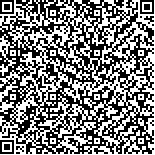| 本文已被:浏览 1308次 下载 633次 |

码上扫一扫! |
|
|
| 传统及中西医“病证结合”的同与异 |
|
陶文娟1,2, 陈启亮1,2, 靖媛1,2, 李灿东1,2,3
|
|
1.福建中医药大学中医证研究基地, 福州 350122;2.福建中医药大学福建省中医健康状态辨识重点实验室, 福州 350122;3.福建中医药大学李灿东岐黄学者工作室, 福州 350122
|
|
| 摘要: |
| 病证结合,因中、西医“病”的内涵不同,可分为传统病证结合及中西医病证结合。这两种病证结合模式虽有相同之处,但差异更为突出,体现在“病”“辨病”“辨病论治”“辨证论治”“疗效评价”和“应用范围”等若干个方面。通过梳理两者的“同”与“异”,知晓病证结合模式应当秉承中医内涵,“衷中参西”,才能更有助于中医诊疗特色和优势的发挥。 |
| 关键词: 病证结合 辨病论治 辨证论治 同异 |
| DOI:10.11656/j.issn.1672-1519.2021.04.01 |
| 分类号:R241 |
| 基金项目:国家自然科学基金联合基金项目(U1705286);国家自然科学基金重点项目(81230087)。 |
|
| Similarities and differences between the disease-syndrome combinationmodes of traditional Chinese medicine and integrated medicine |
|
TAO Wenjuan1,2, CHEN Qiliang1,2, JING Yuan1,2, LI Candong1,2,3
|
|
1.Research Base of Traditional Chinese Medicine Syndrome, Fujian University of Traditional Chinese Medicine, Fuzhou 350122, China;2.Key Laboratory of Traditional Chinese Medicine Health Status Identification in Fujian Province, Fujian University of Traditional Chinese Medicine, Fuzhou 350122, China;3.LI Candong Qihuang Scholar Studio, Fujian University of Traditional Chinese Medicine, Fuzhou 350122, China
|
| Abstract: |
| Due to the differences of disease connotation between traditional Chinese medicine (TCM) and Western medicine,disease-syndrome combination modes could be divided into:TCM disease-syndrome combination mode and integrated medicine disease-syndrome combination mode. These two modes have several same points,but more obvious are their differences,reflected in aspects of disease connotation,disease differentiation,treatment based on disease differentiation,treatment based on syndrome differentiation,curative effect appraising and application range. Through presenting the similarities and differences of the two combination modes,we know that disease-syndrome combination mode could contribute more to the application of diagnosis and treatment features and advantages of TCM,by integrating Chinese and Western medicine based on inheriting TCM connotation. |
| Key words: disease-syndrome combination treatment based on disease differentiation treatment based on syndrome differentiation similarities and differences |
